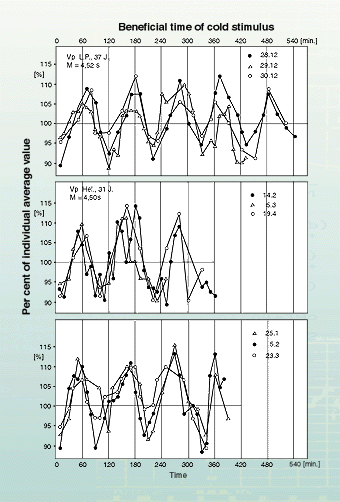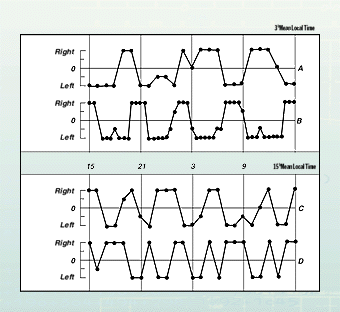|
Some of the rhythmic procedures in the organism can be directly experienced by us, and can even be more or less voluntarily influenced, such as the heart and breathing rhythm. Others, such as the 90 -120 minute basal activity rhythm (illustration 2) or the side rhythm of blood distribution which shows most clearly in the side change of nose breathing with a periodic duration of 6-8 hours (illustration 3), are hardly noticed by us, and must be shown by appropriate measured values. |
|
 |
|
|
|
 |
|
|
|
|
|
| B A S I C M U S I C M E D I C I N E R E S E A R C H |
|
The
Biological Fundamentals of the Digital Stress Management Chronobiological Aspects of Music Physiology continued |